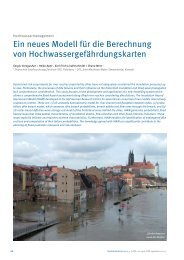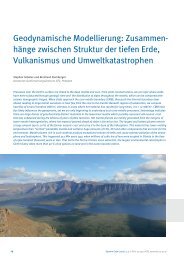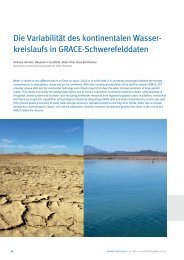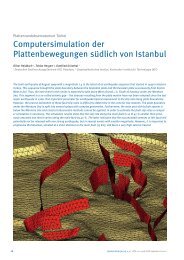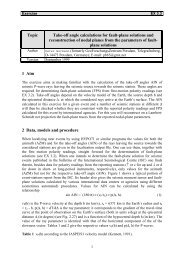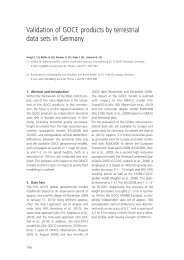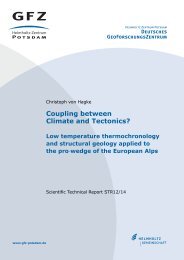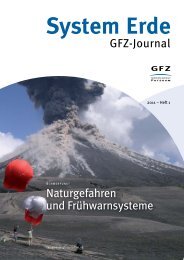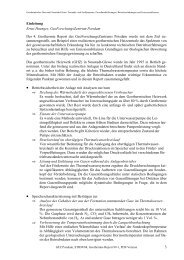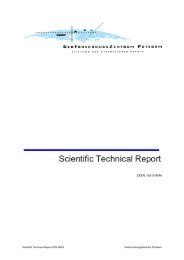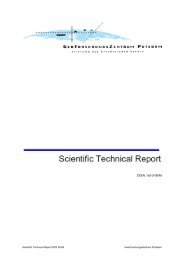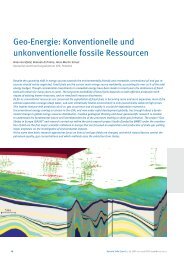2 Seismic Wave Propagation and Earth models
2 Seismic Wave Propagation and Earth models
2 Seismic Wave Propagation and Earth models
Create successful ePaper yourself
Turn your PDF publications into a flip-book with our unique Google optimized e-Paper software.
2. <strong>Seismic</strong> <strong>Wave</strong> <strong>Propagation</strong> <strong>and</strong> <strong>Earth</strong> <strong>models</strong><br />
An outst<strong>and</strong>ing example for an LVZ, which shows these feature very clearly, is the outer core.<br />
At the core-mantle boundary the P-wave velocity drops from about 13.7 km/s in the<br />
lowermost mantle to about 8 km/s in the liquid outer core. This causes a shadow zone for<br />
short-period direct P waves between around 100° <strong>and</strong> 144°, however slightly “illuminated” by<br />
reflected arrivals from the inner-core boundary (PKiKP) <strong>and</strong> by rays that have been refracted<br />
backward to shorter distances (retrograde travel-time branch) due to the strong velocity<br />
increase in the inner core (phase PKPdf = PKIKP) (see Fig. 11.59). The travel-time branch<br />
PKPab corresponds qualitatively to the blue branch <strong>and</strong> the branch PKPdf beyond the caustic<br />
to the violet branch in Fig. 2.30 (compare with overlay to Fig. 2.47). There may exist,<br />
however, also LVZ´s in the crust <strong>and</strong> in the upper mantle (asthenosphere; see PREM model in<br />
Fig. 2. 53). Low-velocity zones are often more pronounced in S-wave velocity than in P-wave<br />
velocity because material weakening due to (partial) melting reduces more strongly the shear<br />
modulus μ than the bulk modulus κ (see Eqs. (2.9) <strong>and</strong> (2.10)).<br />
2.5.3.4 Refraction, reflection, <strong>and</strong> conversion of waves at a boundary<br />
So far we have only considered transmission of seismic waves at a boundary. However,<br />
generally not all energy is transmitted; parts are reflected or converted. If a P wave hits a<br />
boundary between different seismic velocities, four different waves may be generated: a<br />
transmitted P wave; a converted transmitted S wave purely polarized in the vertical plane of<br />
propagation (SV-wave); a reflected P wave; <strong>and</strong> a reflected converted SV wave (Fig. 2.31).<br />
The geometry of these waves is also governed by Snell's Law:<br />
sin i/vp1 = sin j/vs1 = sini´/vp2 = sin j´/vs2. (2.17)<br />
Fig. 2.31 An incident P wave at a solid-solid boundary (shown is the case v1 < v2) generates a<br />
reflected <strong>and</strong> a transmitted P wave <strong>and</strong> a reflected <strong>and</strong> transmitted SV wave. Snell’s Law<br />
governs the angular relationship between the rays of the resultant waves.<br />
32



